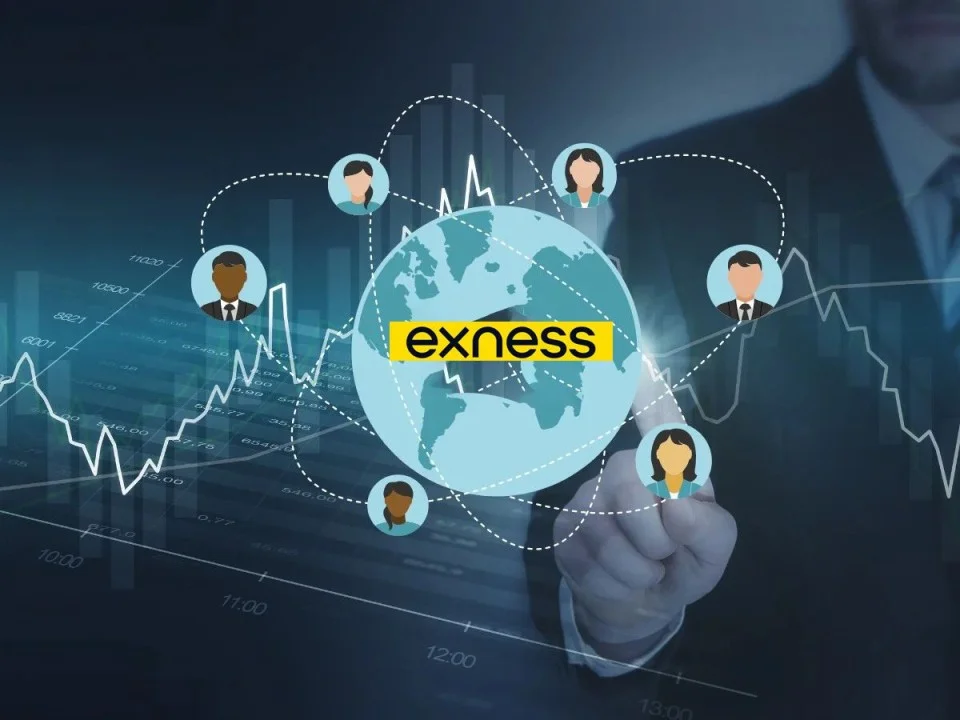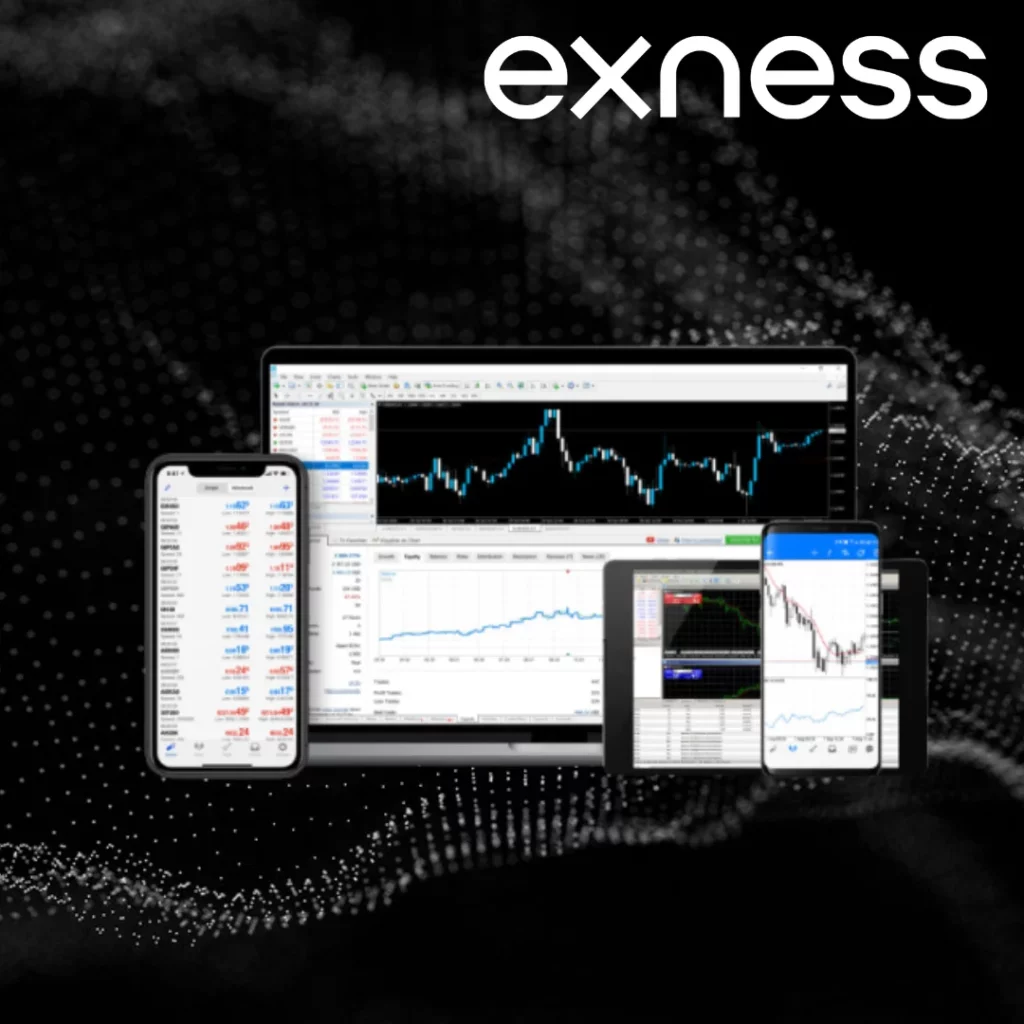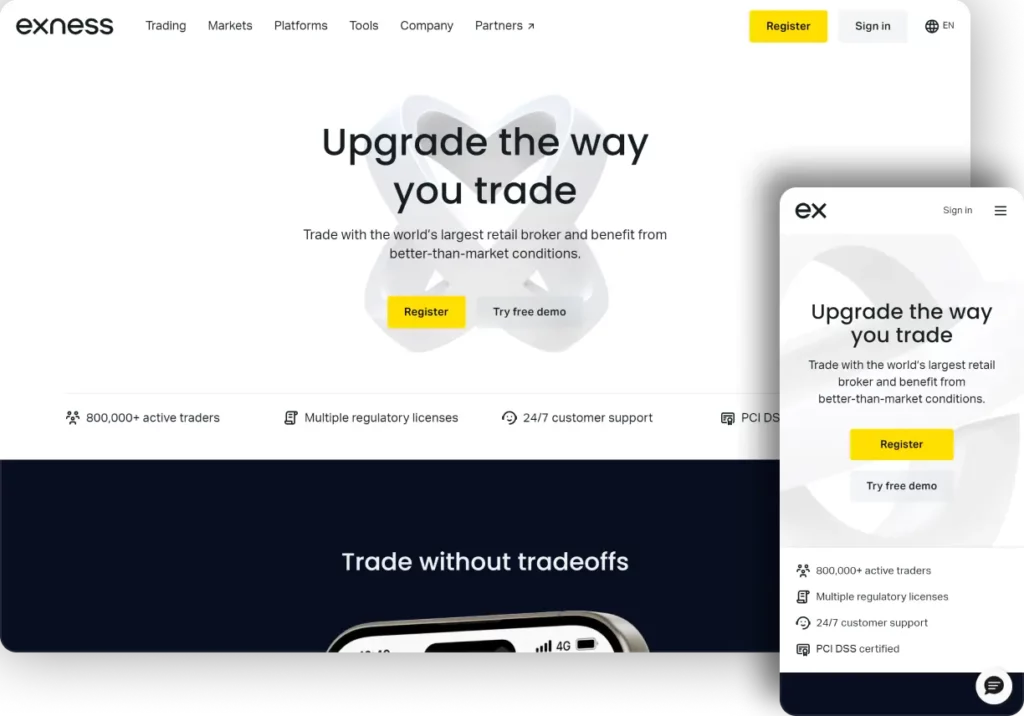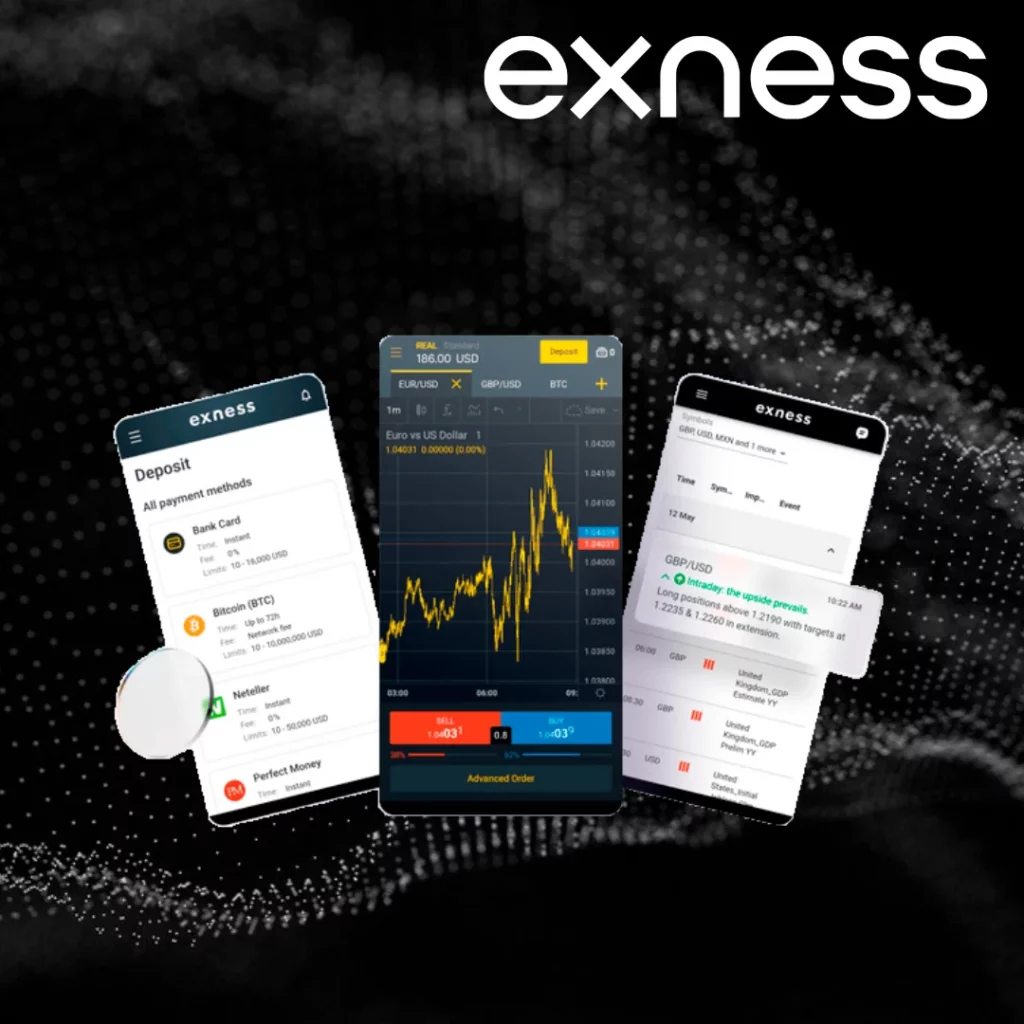Background of Exness
The name Exness reflects a combination of two ideas: “exchange” and “business.” It captures the company’s purpose of creating efficient, technology-powered access to the financial markets. More than a label, the name signals a focus on precise execution, data-driven systems, and a professional environment for traders. This emphasis on practical performance, rather than branding hyperbole, aligns with the company’s long-term vision—engineering a modern, fair, and stable market framework for global participants.
History and Growth
Founded in 2008, Exness emerged during a time when retail forex trading was expanding rapidly, but broker practices were often opaque and restrictive. Many market participants faced withdrawal issues and inflexible trading environments. The founders of Exness saw an opportunity to create a different kind of brokerage—one that prioritized fast execution, honest trading conditions, and operational transparency.
Initially launched as a small startup in Tomsk, Russia, Exness has evolved into a multinational brokerage with over 600 employees. The company’s growth trajectory has been marked by constant innovation, including the early adoption of automated withdrawals and dynamic spread systems. By emphasizing user-focused features and scalable trading infrastructure, Exness has gained a loyal global client base.
Today, the broker facilitates trillions in monthly trading volume and supports hundreds of thousands of active accounts. With ongoing investments in technology and infrastructure, Exness continues to expand its footprint in both mature and emerging markets.

Global Presence and Reach
Exness operates under multiple regulatory jurisdictions and maintains physical offices in strategic regions, including Cyprus, the United Kingdom, South Africa, Seychelles, Kenya, and Curaçao. The broker serves traders from more than 100 countries and is particularly strong in regions such as Southeast Asia, Latin America, Sub-Saharan Africa, and the Middle East.
Its global approach is reinforced by multilingual support teams, localized payment options, and market-specific services. This ensures that clients can access high-quality trading conditions regardless of geography. Importantly, the broker tailors its offerings based on regulatory requirements in each region, maintaining both compliance and client-centric service.
Trading Platforms Offered
Trading platforms are the core interface between market participants and financial markets. These systems allow users to place, modify, and close trades, analyze market conditions, and apply automated strategies. A well-designed platform is not just a tool but an operational environment where traders make decisions, manage risk, and execute strategies in real time. The effectiveness of this environment can influence performance, especially during volatile conditions or high-frequency operations. At its core, a trading platform must combine speed, stability, and flexibility to meet the evolving demands of both individual and institutional traders.

Available Trading Software
Exness provides access to a range of trading terminals, allowing traders to choose platforms that match their strategies and preferences. The two main third-party platforms available are MetaTrader 4 (MT4) and MetaTrader 5 (MT5), both developed by MetaQuotes. In addition, Exness offers its proprietary solutions, such as Exness Terminal for desktop users and Exness Trade for mobile users.
These platforms cover all trader types—from those who require algorithmic trading capabilities to those who prefer manual execution or mobile charting. Each version is optimized for reliability, speed, and access to full market depth.
MetaTrader 4, in particular, is popular among retail traders and expert advisors (EAs). It features a familiar interface and supports a wide range of technical indicators, scripts, and custom plugins. MetaTrader 5 expands on this with additional timeframes, more order types, and improved analytical tools.
Platform Features for Traders
All supported platforms include core functions such as one-click trading, live price feeds, customizable charts, and risk management tools. Beyond this, Exness platforms integrate important features for professional trading:
- Execution Speed: Orders are executed within milliseconds across all platforms.
- Scalping and Hedging: Both strategies are allowed with no restrictions.
- Multilingual Interfaces: Interface languages are available in dozens of options, including English, Arabic, Thai, Vietnamese, and more.
- Automated Trading: MT4 and MT5 fully support trading robots and custom indicators.
- Multi-account Management: Available through the MT4 MultiTerminal, which lets users manage up to 128 accounts simultaneously—a feature tailored to account managers.
Moreover, all trading data is encrypted using 128-bit keys, providing a secure connection between client terminals and Exness servers. Clients can also enable two-factor authentication and set up trading notifications to stay informed in real time.
Account Types and Options
In the trading environment, an account type defines the conditions under which a trader interacts with the market. These conditions include pricing structure, order execution method, spread model, commission rates, and leverage settings. The choice of account influences cost efficiency, strategy compatibility, and overall trading flexibility. For new entrants, account types can simplify onboarding by reducing complexity. For seasoned traders, account configuration becomes a tool for optimizing performance. Selecting the right type depends not only on experience but also on how one trades—whether manually or algorithmically, short-term or long-term, in high volumes or smaller transactions.
Overview of Account Choices
Exness provides a versatile selection of trading account types designed to meet the specific needs of traders at different experience levels and with various trading goals. The structure of the accounts emphasizes flexibility, accessibility, and efficiency. Whether the objective is low-cost scalping or long-term position trading, the account types available can accommodate a wide range of strategies.
Here’s a breakdown of the main live account options:
- Standard Account: Ideal for most retail traders, offering market execution with no commission and tight floating spreads. It supports a wide range of instruments, including forex, metals, cryptocurrencies, and indices.
- Standard Cent Account: Geared toward beginners or those testing new strategies, this account uses cent lots, making it possible to trade smaller volumes with lower risk exposure. It mirrors the Standard Account in terms of features but uses cent-based calculations.
- Pro Account: Designed for experienced traders who require low latency, this account offers zero commission and ultra-tight spreads. It supports high-volume trading with improved order execution stability.
- Raw Spread Account: This account type features some of the lowest available spreads in the industry, starting from 0.0 pips. A fixed commission per trade is applied, suitable for those who value precise market pricing.
- Zero Account: Offers zero-spread trading on selected instruments during specific periods, with a fixed commission per lot traded. It’s popular among algorithmic and high-frequency traders who require predictable costs.

Each account type supports customizable leverage settings, enabling clients to adapt their risk exposure according to market conditions. Leverage options range from fixed ratios to unlimited leverage, depending on the trader’s region, instrument, and equity level.
Additionally, all accounts are available in a wide selection of base currencies, including USD, EUR, GBP, and others. This eliminates conversion costs for deposits and withdrawals and aligns better with the trader’s preferred currency.
Trading Instruments Available
In trading, an instrument refers to any asset or contract that can be bought or sold in financial markets. These instruments form the basis for speculative or hedging strategies and represent the price movements of real or derivative assets. Access to a wide range of instruments allows traders to diversify, manage exposure, and adjust strategies based on changing economic cycles. Whether it’s currencies, commodities, indices, or digital assets, each market category comes with its own volatility patterns, liquidity profile, and trading hours. Having these instruments consolidated on a single platform increases efficiency and simplifies portfolio management.
Markets and Asset Classes
Exness supports trading on a wide variety of financial instruments through contracts for difference (CFDs). This variety allows traders to diversify their portfolios across asset classes and adjust to different market conditions without changing platforms.

Here are the primary markets available:
- Forex: The platform provides access to over 100 currency pairs, covering major pairs like EURUSD and USDJPY, minor pairs, and a wide selection of exotic currencies. The foreign exchange market remains a core offering and benefits from deep liquidity and fast execution times.
- Metals: Traders can engage in CFD trading on gold, silver, platinum, and palladium. These are quoted against multiple currencies, such as USD, EUR, GBP, and AUD, offering flexibility in pairing and hedging.
- Energies: Popular instruments like Brent crude (UKOIL), WTI (USOIL), and natural gas (XNGUSD) are available. These are frequently used by traders seeking volatility or those managing risk exposure to the commodities sector.
- Indices: Exness supports a wide range of stock indices from major global markets, including the NASDAQ 100, FTSE 100, S&P 500, DAX, and Nikkei 225. These indices offer a broad view of economic trends and can be used for both directional and hedging strategies.
- Stocks: A selection of global stocks is available for CFD trading. These include shares of companies from various industries, such as technology (e.g., Apple, Meta), automotive (e.g., Tesla), and consumer goods (e.g., Coca-Cola).
- Cryptocurrencies: Exness also offers trading on leading digital currencies like Bitcoin, Ethereum, and Litecoin. These are accessible as CFDs in various quote combinations, such as BTCUSD, ETHJPY, and LTCBTC.
Traders can also apply advanced tools like technical indicators and automated strategies to any of these instruments. All assets are integrated within the MetaTrader platforms and the Exness proprietary terminals, ensuring uniform access to charts, order types, and execution parameters.
Regulation and Safety
Exness operates under a framework of strong regulatory oversight and adheres to international standards for client protection and financial transparency. The company holds licenses from several well-recognized financial authorities:
- FSA (Seychelles).
- CySEC (Cyprus).
- FCA (United Kingdom).
- FSCA (South Africa).
- CBCS (Curaçao and Sint Maarten).
- FSC (British Virgin Islands and Mauritius).
- CMA (Kenya).
These licenses reflect a multi-jurisdictional structure that allows Exness to serve traders globally while maintaining compliance with region-specific regulatory requirements. Each regulatory body enforces strict standards regarding client fund segregation, reporting obligations, and operational transparency.
To enhance client security, Exness implements the following measures:
- Segregated Accounts: Client funds are kept in separate bank accounts, not mixed with operational capital. This ensures traders maintain full access to their funds regardless of company operations.
- Instant Withdrawals: Most transactions are processed in seconds without manual intervention, using automated systems that reduce delays and improve reliability.
- Encryption Protocols: All trading activities and personal data are protected using advanced encryption technologies, including 128-bit secure socket layers (SSL).
- Negative Balance Protection: Clients cannot lose more than their account balance, protecting them against market gaps or extreme volatility.
- Third-party Audits: Trading volumes and financial statements are independently reviewed, and audit reports are publicly available.
These safeguards reflect a commitment to fair dealing, stability, and accountability in all client interactions.

